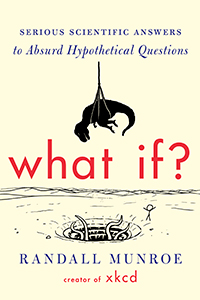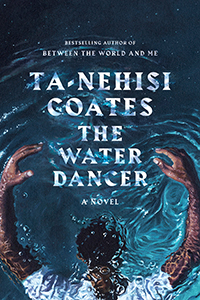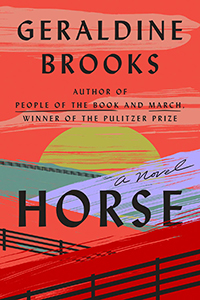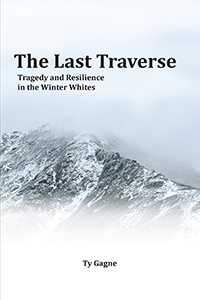 What If? Serious Scientific Answers to Absurd Hypothetical Questions by Randall Munroe (and/or its sequel, What If? 2).
What If? Serious Scientific Answers to Absurd Hypothetical Questions by Randall Munroe (and/or its sequel, What If? 2).
Randall Munroe (author of the webcomic “XKCD”) gives extremely funny, well-researched, scientifically accurate answers to absurd questions. Could you build a jetpack out of downward-facing machine guns? (Surprisingly, yes.) What if you could throw a baseball at half the speed of light? (Spoiler: this doesn’t end well for the neighbors. —Gary Felder, professor of physics
 The Water Dancer: A Novel by Ta-Nehisi Coates
The Water Dancer: A Novel by Ta-Nehisi Coates
Set in pre-Civil War Virginia, Coates’s novel combines historical fiction and magical realism to tell the story of a young man’s transformation from enslaved person to heroic agent. If you’re looking for a book with imagination, inspiration, and escape, this is for you.—Floyd Cheung, vice president for equity and inclusion, professor of English language and literature and American studies
 Horse by Geraldine Brooks
Horse by Geraldine Brooks
It is ostensibly a book about Lexington, one of the greatest racehorses of all time but is about race and racism in both the 19th century and the present day. It also brings to light the little-known lives and work of Black men throughout horse racing history in the U.S. It seemed like the perfect time to read this as I am launching a new research project on chronic diseases in horses and working on longer term projects on the intersections of race, health, medicine, and science with colleagues at Smith. —Suzanne Z. Gottschang, professor of anthropology and East Asian studies, director of the Kahn Liberal Arts Institute
 The Last Traverse: Tragedy and Resilience in the Winter Whites by Ty Gagne
The Last Traverse: Tragedy and Resilience in the Winter Whites by Ty Gagne
I recently went to listen to Ty Gagne speak about backcountry rescues, backcountry safety and risk assessment. He wrote an article that my sister sent me after two unfortunate deaths this past winter in New Hampshire's White Mountain National Forest. I immediately picked up and devoured his book. It takes place in the Franconia Range, an area of the Whites I know well and love to frequent. I’m looking forward to reading his other book Where You'll Find Me: Risk, Decisions, and the Last Climb of Kate Matrosova, which takes places in the Presidential Range and where I’m heading to finish my 4,000 footers.—Andy Cox, executive director of auxiliary services
 Useful Delusions: The Power and Paradox of the Self-Deceiving Brain by Shankar Vedantam (host of the equally enjoyable and thought-provoking podcast Hidden Brain).
Useful Delusions: The Power and Paradox of the Self-Deceiving Brain by Shankar Vedantam (host of the equally enjoyable and thought-provoking podcast Hidden Brain).
Like his podcast, this book explores hidden patterns of human behavior, often revealing that our thoughts, motivations, and judgments are not driven by what we think is driving them. Vedantam's book challenges the seemingly self-evident idea that objective truth must always be used to shatter the stories we tell ourselves to enrich or stabilize our lives.—John Berryhill, landscape curator, the Botanic Garden of Smith College


 What If? Serious Scientific Answers to Absurd Hypothetical Questions by Randall Munroe (and/or its sequel, What If? 2).
What If? Serious Scientific Answers to Absurd Hypothetical Questions by Randall Munroe (and/or its sequel, What If? 2). The Water Dancer: A Novel by Ta-Nehisi Coates
The Water Dancer: A Novel by Ta-Nehisi Coates Horse by Geraldine Brooks
Horse by Geraldine Brooks The Last Traverse: Tragedy and Resilience in the Winter Whites by Ty Gagne
The Last Traverse: Tragedy and Resilience in the Winter Whites by Ty Gagne  Useful Delusions: The Power and Paradox of the Self-Deceiving Brain by Shankar Vedantam (host of the equally enjoyable and thought-provoking podcast Hidden Brain).
Useful Delusions: The Power and Paradox of the Self-Deceiving Brain by Shankar Vedantam (host of the equally enjoyable and thought-provoking podcast Hidden Brain).